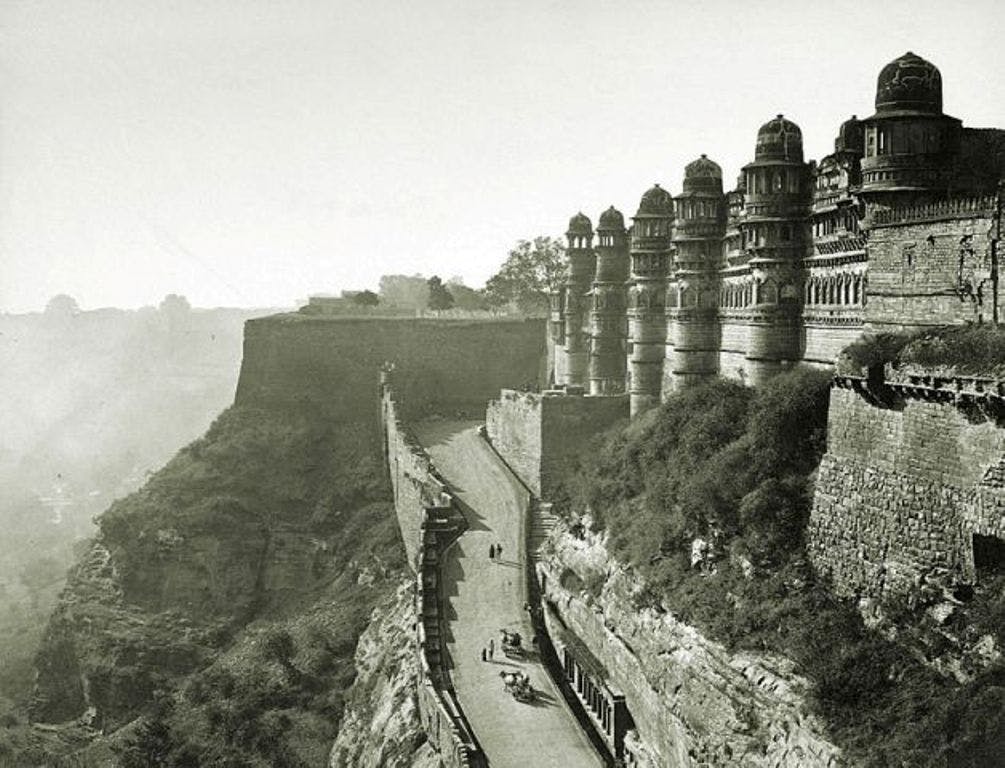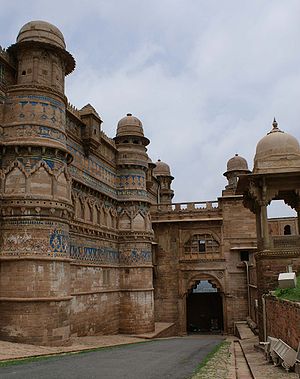A beautiful, brave and fiery woman in the pages of Indian history
Jan 21, 2015
Story








The fort wall was an artifact, property of great historical value, a museum pride and the most precious belonging of the people of Gwalior, a city in the central region of India. It was a beautiful autumn evening, in my walk up the steep ascent that led to the front of the fort I could sense the magnificent dominance of the structure in this terrain. Gwalior fort-militarily, it must have been almost unconquerable. As I shifted my backpack that was an unwise and unnecessary weight that carried my laptop, tablet, water bottle brimming with cold water to beat the heat, notepads, my glasses and camera I found myself annoyed to be in a situation like this where I would have fared better without a heavy bag . The ascent to the main fort gate made my calf muscles ache, the fading sun acted harsher on my skin, I almost gave up weary and sat down on the rocky path to catch my breath. From where I sat on one side was the towering fort of Gwalior, on the other was the panoramic view of the city of Gwalior. If not for the physical challenge to climb the 100 meters rise to the fort that is built on a hill of sandstone, this evening was enchanting. I was spell bound.
The fort built by Raja Man Singh Tomar in the 15th century spreads out over an area of 3 square km, the solid sandstone walls enclosing three temples, six palaces and a number of water tanks. The Mughal emperor Babar once called the Gwalior fort a 'pearl among fortresses in India', and a pearl it is. In the five hundred years of its life, the fort has changed hands many times - the Tomars, Mughals, Marathas and British who finally handed it over to the Scindias. The fort has been a witness to many battles. But there is one battle you would never mix up with the several others which took place in this enchanting place long long ago in 1858 - a battle fought by a young, beautiful and fiery woman on horseback, a woman who endorsed the spirit of an Indian 'Rani', 'Jhansi ki Rani', Rani Laxmibai.
I reached the summit, walked through the fort bare foot, waded through the rooms and the beauty of it all but my mind was far off. Sitting outside under a tree I was engulfed by all the structures and this environment that reached out to me, calling me by my name, pulling me into an era long gone and forgotten. The grass in one quiet corner of the fort was unkempt. The walls of these formations were trying to communicate to me because though I found it beautiful, the sadness that emanated from it didn’t escape my senses. There certainly was a sad story in there, missing from the pages of history, a history known to you and me. I returned home carrying this feeling of this magical autumn evening in my heart. I would try to get a few answers in the solitude of my home.
In the two days that ensued I read every scrap I could find on Rani Lakshmi Bai. I found two pictures of her, both contending to be the only real picture of the Rani that was ever taken, and by a British journalist Hoffman in the year 1850. I peered at her zoomed in picture for hours, mesmerized by her and trying to understand the person she used to be. At the end I was ready to write but something strange happened that night. I saw a nightmare that night and the subsequent night. There were many people standing in my room, someone even got my travel bag and few of them began to carry it with them.I got up sweating profusely, disturbed out of my wits.
The next morning I was photographing an old Hanuman Temple. The caretaker told me that he believed where this temple was built was a battle field that has seen many battles and deaths. To pacify the disturbed souls of the people who died, this mandir was made. The place where I lived was right behind the temple. I remembered my nightmare. Was someone trying to reach out to me through my dreams? I walked hurriedly to my room and switched on my laptop. The story I had half written, or tried to write last night was incomplete, I had got stuck at a point. The point where Rani Lakshmi bai lived the last moments of her life. It was a total mismatch to what I had known of her in the last few days. It didn’t quite fall into place. But now I knew I needed an answer. I got up with a start then. I had to go to Gwalior Fort.
.
.
.
.
.
.
.
.
(read on India Water Portal. Find the link below)
http://www.indiawaterportal.org/post/32797




